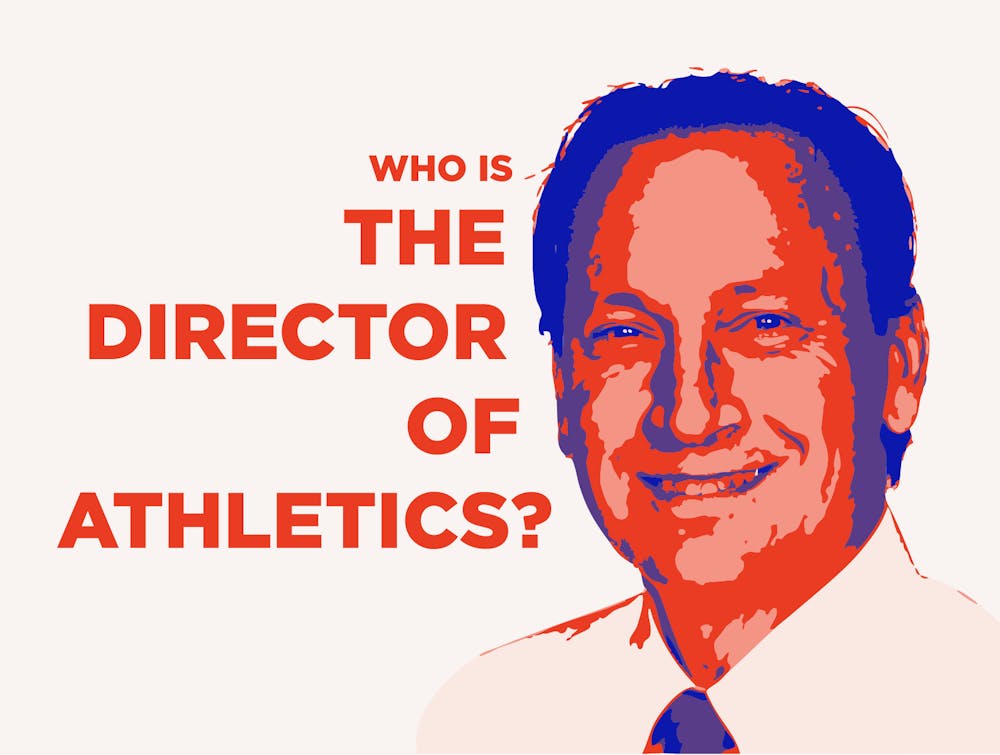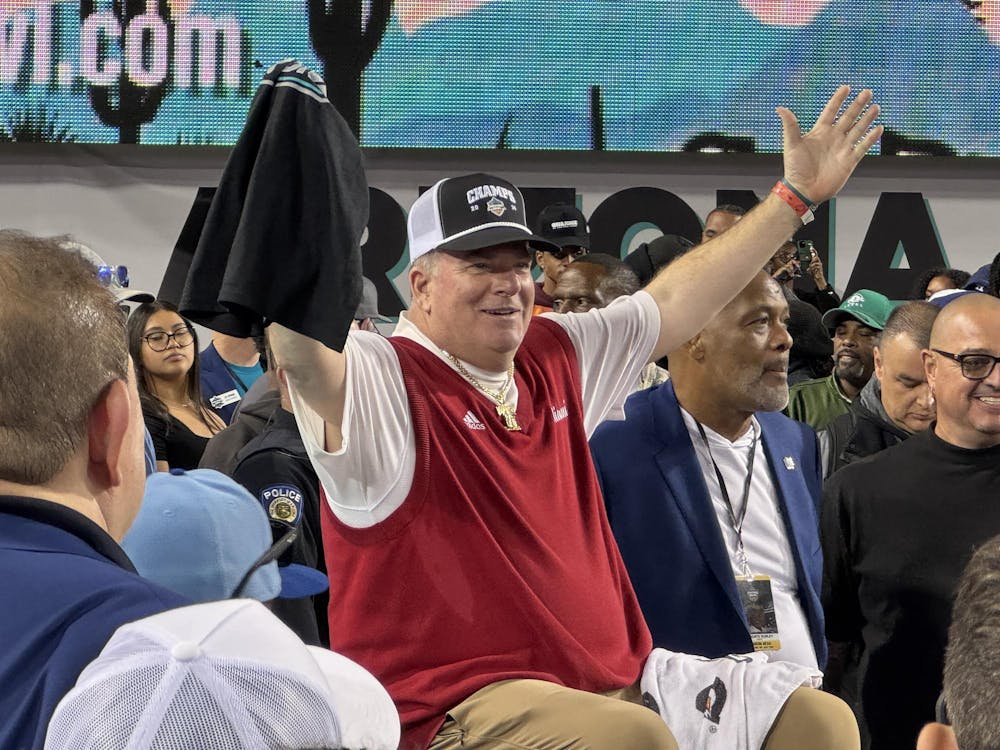Miami University has 19 sports, not including club or intramural, and 540 student athletes. Each team requires coaches, funding and facilities. David Sayler, Miami’s director of athletics, is in charge of all of them.
But in Sayler’s mind, he serves them.
At the beginning of the year, he asked the athletes where he was positioned on a pyramid versus them. They answered, “You’re the top dog,” “You’re the chief” and “You’re in charge.”
“And I'm like, no, actually, in my mind I flipped that pyramid upside down, and I'm on the bottom,” Sayler said. “I serve up to my staff and serve up to my coaches and provide them the resources they need to ultimately produce a great situation for the fans and the community and the students themselves.”
He also leads athletics with the guiding mission of “graduating champions.”
But what does he do?
Enjoy what you're reading?
Signup for our newsletter
Dave Meyer, the assistant athletic director for communications, who manages Sayler’s schedule and works with local and national media outlets to promote the student athletes and coaches, said that since Sayler started working at Miami 13 years ago, he’s implemented changes to put Miami back on the map. Including the seat changes in Millett Hall from green to red, he’s added tennis courts, two new football facilities, which he fundraised $40 million for, and is working on the new sports arena.
“He's got millions of things going on,” Meyer said. “The world that I live in is such a small world, but I do want to try [and help it] go well when he is doing an interview, because it does help him. It helps Miami athletics …”
Meyer said he would be surprised if students knew what Sayler did because of all the different hats he wears.
Janelle Tipton, a senior Spanish major, proved him right. She said she has no idea what the director of athletics does, but guessed he “makes decisions on funding stuff and probably what sports are here at Miami.”
Ryan Robusto, a sophomore finance major, had a similar answer and added that a strong leader equals a strong team.
“Sports bring in a lot of revenue, so having an athletic director who can lead means better sports teams and more revenue they can use to support students,” Robusto said.
Sayler’s responsibilities vary depending on the time of year, but he’s involved with the decision-making of different sports, fundraising, meeting donors and alumni across the country, managing the athletic budget and getting involved with NCAA committees to help the national office run. He’s also in charge of hiring coaches, monitoring staff and making sure everybody's doing OK.
“A lot of times I'll come in, though, and I'll have my day kind of planned out, but then it ends up being completely different than that,” Sayler said. “So I sometimes would equate to you that, like, I should come to work wearing a fire hat, because you just don't know what's going to pop up that day.”
He offered the examples of a student who got injured the night before, and they have to deal with a hospital situation for them, or organizing travel for a team that got stuck in a different city.
He said all of his responsibilities and roles are just part of Miami’s mission of “graduating champions.”
“I love watching them compete, and I really believe at my core that what makes sports unique is that these student athletes overcome things that make them more prepared for life,” he said. “You know, they're part of a team, and when you're on that team, nobody cares where you're from, how much money your family has, what your political beliefs are [or] whatever else.”
One surprising aspect of his role is how connected the athletic department is to the rest of the university. He compared it to Ohio State University and how it has resources to be “its own island,” but Miami is intertwined with campus life.
Sayler is involved with the dining halls, residence halls and the deans of the different colleges.
“You know, one of the things I really love about Miami is we have a student athlete who is an architecture major,” Sayler said. “Everywhere she went to be recruited, the coaches at those schools told her, ‘You can't be a student athlete, Division I [basketball player] and do architecture. It's too difficult a major to manage, time-wise. Miami was like, ‘No, you can do that here.’ And she's here, and she's having a great experience.”
Contributed reporting by Paul Gollis.




